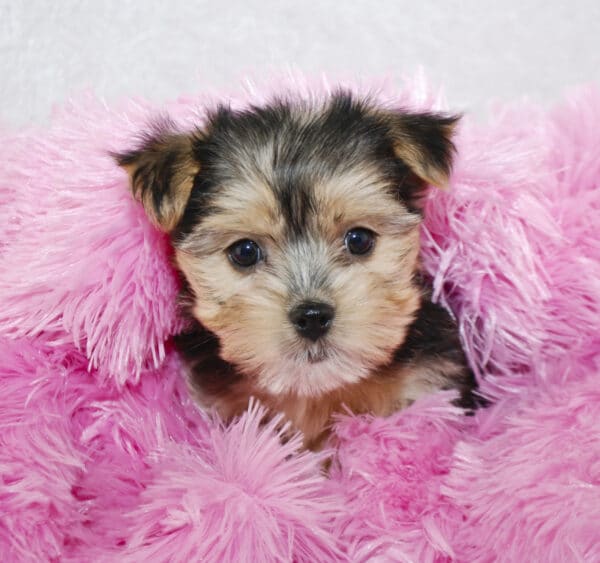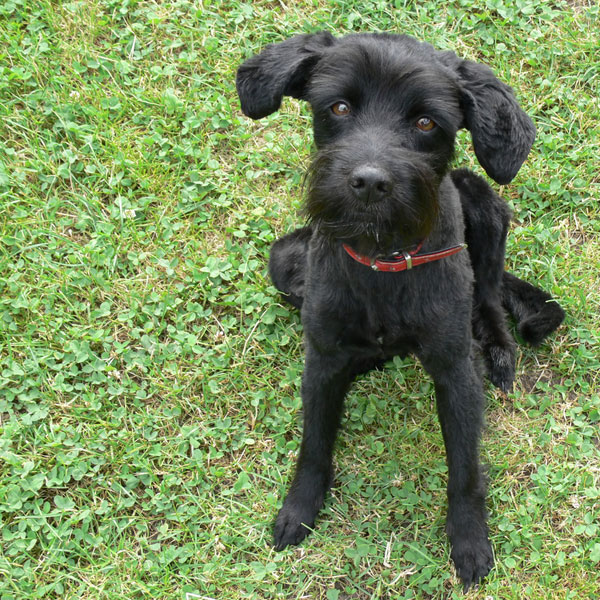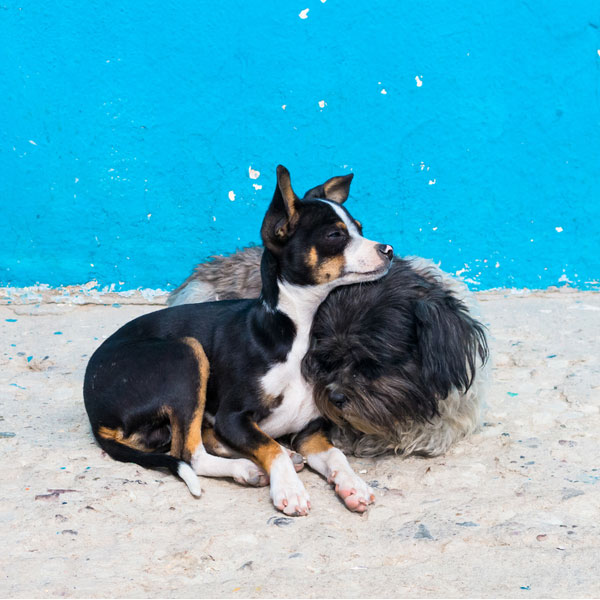The notion that the dog breeds we have, or those mixes that happen in nature, are somehow insufficient is alarming. That researchers or specialty breeders would tamper with dog genetics to produce designer dogs simply because they can seems strange and unusual. When they do it to satisfy consumer whims, the concept of designer dogs reminds one of the excesses of Mary Shelley’s misguided Doctor Victor Frankenstein, the gruesome hybridization experiments of H.G. Wells’ Doctor Moreau, or the obsessions to master life itself that drove the mad scientist in H.P. Lovecraft’s Herbert West — Reanimator.
For the less literary-minded, the phrase “designer dogs” evokes the awful conditions suffered by dogs in puppy mills. It is not that designer dogs themselves, as dogs, are bad, but there are understandable objections to the processes and motivations that drive their creation. With a surplus of dogs and puppies available for adoption in shelters and rescues, there would seem to be no substantial need for designer dogs or hybrid dogs that do not occur naturally.

What are designer dogs?
The term “designer dogs” is of relatively recent coinage, and refers specifically to dogs who are the offspring of two different purebred dog breeds, or specialty dogs that are crossbred for aesthetics, size, attitude, or supposedly hypoallergenic qualities.
Technically, any mutt or mixed breed is a hybrid dog, but specialty breeders and those who profit from the sale of designer dogs prefer them to carry not only the cachet of the original breeds, but to gain value from their crossing. That one dog is more valuable, or worth more, than another is debatable.
Designer dogs, when the product of two pure breeds, are often given portmanteau names to increase their visibility and to raise marketing interest. Thus we get hybrid names for hybrid dogs like the Schnoodle (Schnauzer and Poodle), Huskamute (Husky and Alaskan Malamute), and the Goldador (Golden Retriever and Labrador Retriever).
Why are designer dogs bred?
Dogs have been cross breeding in nature since dogs have existed. We call them mutts or mixes. My own dog is an indeterminate mix, and even when people ask, I have to admit I’m both ignorant of her particular makeup and uninterested. I just know she’s a great dog.
Designer dogs, also referred to as hybrid dogs, are not officially recognized as breeds in themselves by official organizations like the American Kennel Club. What are the reasons that people these days seek out designer dogs? Specialty breeders and puppy mills breed designer dogs to emphasize certain aesthetic traits, improve trainability, and, commonly, to produce so-called hypoallergenic dogs.
Designer dogs are bred for their looks, for physical or behavioral traits considered desirable, or for their supposed compatibility with people suffering from allergies. Whether you define hypoallergenic dogs as dogs that allergy-prone people will not react to, as dogs that produce fewer allergens, or as dogs that are allergy-free, the idea of truly hypoallergenic dogs has been proven, by and large, a myth. It is true that people have varying tolerances to the dander and saliva of dogs that provoke allergies, but all dogs produce more dander as they age, including designer dogs.
The ethics of designer dog breeding
With prices that exceed purebred dogs in some instances, higher prices do not indicate greater value. Of course, designer dogs may be bred for aesthetic or temperamental qualities, but breeding is an inexact process, and of a litter of hybrid dogs, only one may exhibit the desired qualities, whatever those may be. The way that dog parents are housed, treated and bred, combined with how the puppies are cared for at birth, makes as much of a difference in a dog’s quality of life as its heredity.
Social status and cultural cachet are not sufficient reasons to own a dog. Attaining the most desirable traits may take generations of effort and countless attempts at crossbreeding. All that effort to produce one idealized dog is disturbing to say the least. Designer dogs often carry large price tags, which only encourages specialty breeders to breed more designer dogs.
All dogs are lovable, and plenty need homes
In the past, hybrid dogs were bred to serve specific and practical purposes. In agrarian societies, shepherds and hunters prized dogs who were hearty enough for the tasks required of them. Where today, for the most part, dogs are friends, companions, and parts of the family, in pre-mechanized cultures, humans once lived and worked in close proximity to their domestic animals and depended on their labor. Certainly, dogs were indispensable parts of domestic and farm life, but humans, not animals, are rational actors with moral duties. To act right by dogs is to accept them as they are, to treat them humanely, and not to encourage frivolous exercises in breeding for purely aesthetic reasons.
There are more than enough dogs and puppies out there who need loving homes. If you are thinking about getting a dog, think seriously about adopting from shelters and rescues in your area! Please help Dogster’s readers and visitors find friends that are waiting to be adopted. Post the names, locations, and websites, where available, of your local rescues and shelters in the comments!
Learn more about dogs with Dogster:
- How Have Dogs Changed After 100 Years of “Purebreeding?”
- Why Raccoons Are a Very Real Threat to Dogs
- 5 Poisonous Plants That Can Ruin Your Dog’s Holiday Season
- I Hear Gurgling Sounds in My Dog’s Stomach; Should I Worry?
Read more about adopting and hybrid dogs:
- The Steps and Costs for Adopting a Dog
- 10 Compelling Reasons to Add a Shelter Dog to Your Life
- Hybrid Dog Information – Mixed Breeds
- Hybrid Breeds
Featured Image Credit: JStaley401, Shutterstock













